While honey bees are the most common and recognizable bees, there are over 20,000 species of bees in the world. Of these species, less than 5 percent of them actually make honey. Most bees are black and yellow, but there are many black and white bees as well. These species are usually solitary bees that don’t produce honey and live outside of colonies.
Bees are incredibly important insects. They are responsible for pollinating about 70 percent of the world’s crops. Lately, many bee species are diminishing or completely disappearing due to pesticide use, habitat destruction, and global warming amongst other problems. Keep in mind if you spot bees in your garden you should leave them alone and try to avoid pesticide use whenever possible. They likely won’t bother you or cause any harm to your home, and can easily be relocated if necessary. It is our responsibility to protect these small creatures that keep our ecosystem and food sources plentiful.
If you’ve recently spotted a black and white bee, you’re probably wondering what kind it is. That’s why we created a list of the most common types of black and white bees, where they live, and if they sting. Keep reading to find out what kind of bee you spotted.
Do Black and White Bees Sting?
Most black-and-white bees are non-aggressive in nature, and won’t sting unless provoked. If you step on a bee while barefoot or accidentally sit on one, your chances of getting stung are much higher than normal. Most of these species are solitary bees, meaning they live alone and have no colony to defend. They may become aggressive if they feel their nest or larvae are threatened. In many species, the males do not have a stinger so the females are the only ones capable of stinging.
White-Banded Digger Bee
White-banded digger bees live across many countries and continents, including Europe, Asia, and North Africa. They are around 0.35 to 0.47 inches long and have black and white stripes on their abdomen. They are solitary bees and do not form colonies. White-banded digger bees rarely sting because they aren’t aggressive. However, if threatened they will sting, but their sting is less painful than honey bees.
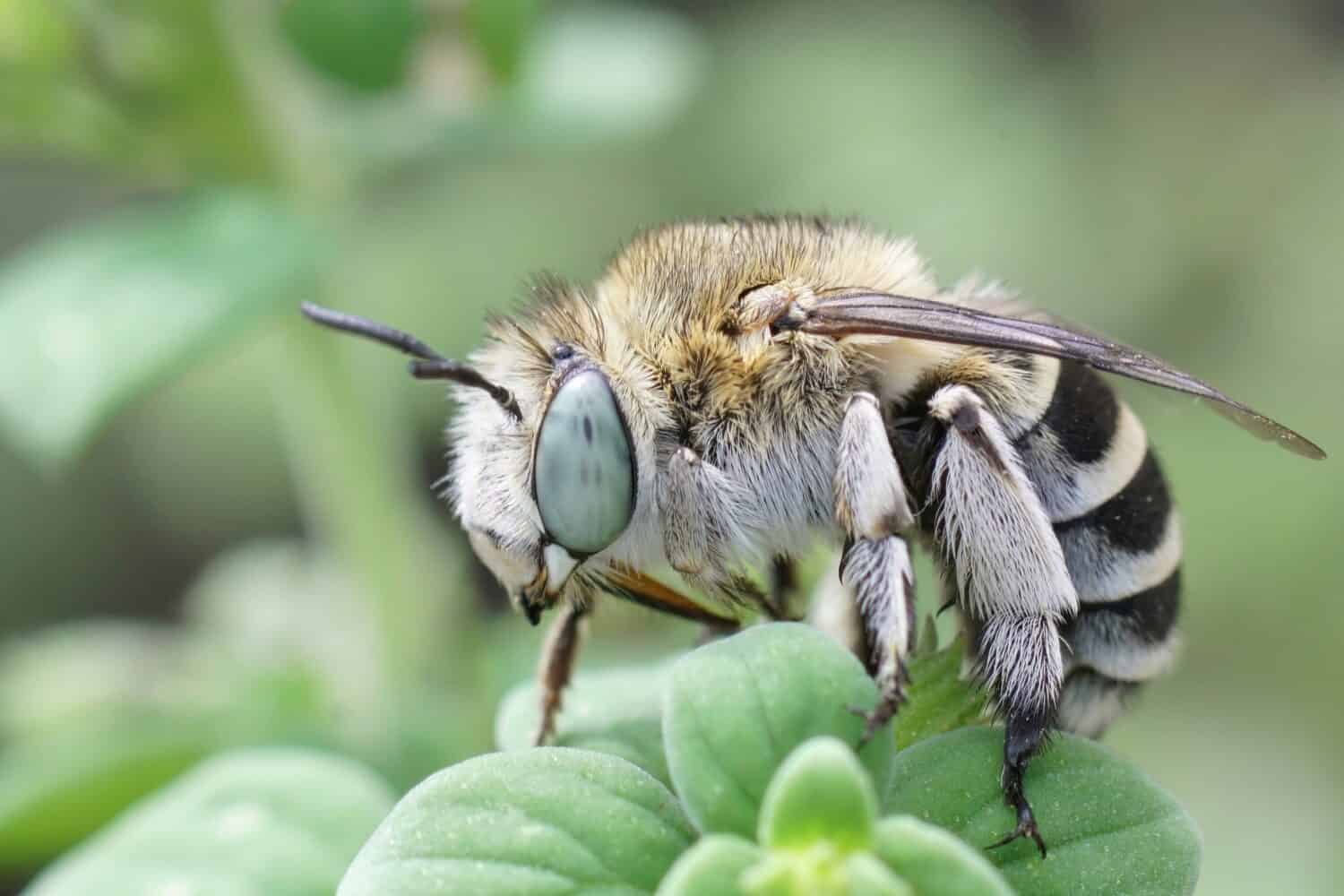
A white-banded digger bee resting on a green leaf.
©HWall/Shutterstock.com
California Digger-Cuckoo Bee
Don’t let the name fool you — California digger-cuckoo bees are found all across North America. Their abdomens are black with white lines that run across and don’t meet in the middle. They are called parasitic bees because they are a parasite of digger bees. These bees don’t construct nests and instead lay their eggs in the nest of their host. They also don’t carry pollen, instead eating the pollen from they take from the host’s nest. California digger-cuckoo bees grow to 0.31 to 0.7 inches long. They will only sting if they are directly provoked.

California digger-cuckoo bee resting on a flower.
©Walter Siegmund, CC BY-SA 3.0 – License
Bellflower Resin Bee
Bellflower resin bees are native to eastern North America. They are a solitary species and were one of the first insect species to make their nests with synthetic materials. Bellflower resin bees are mason bees. This means they use mud and pebbles, as well as plant and tree resins to create nests. These bees have gray or brown wings and black and white striped abdomens. They measure 0.31-0.47 inches in length. The males of this species do not sting, and the females will not sting unless provoked.
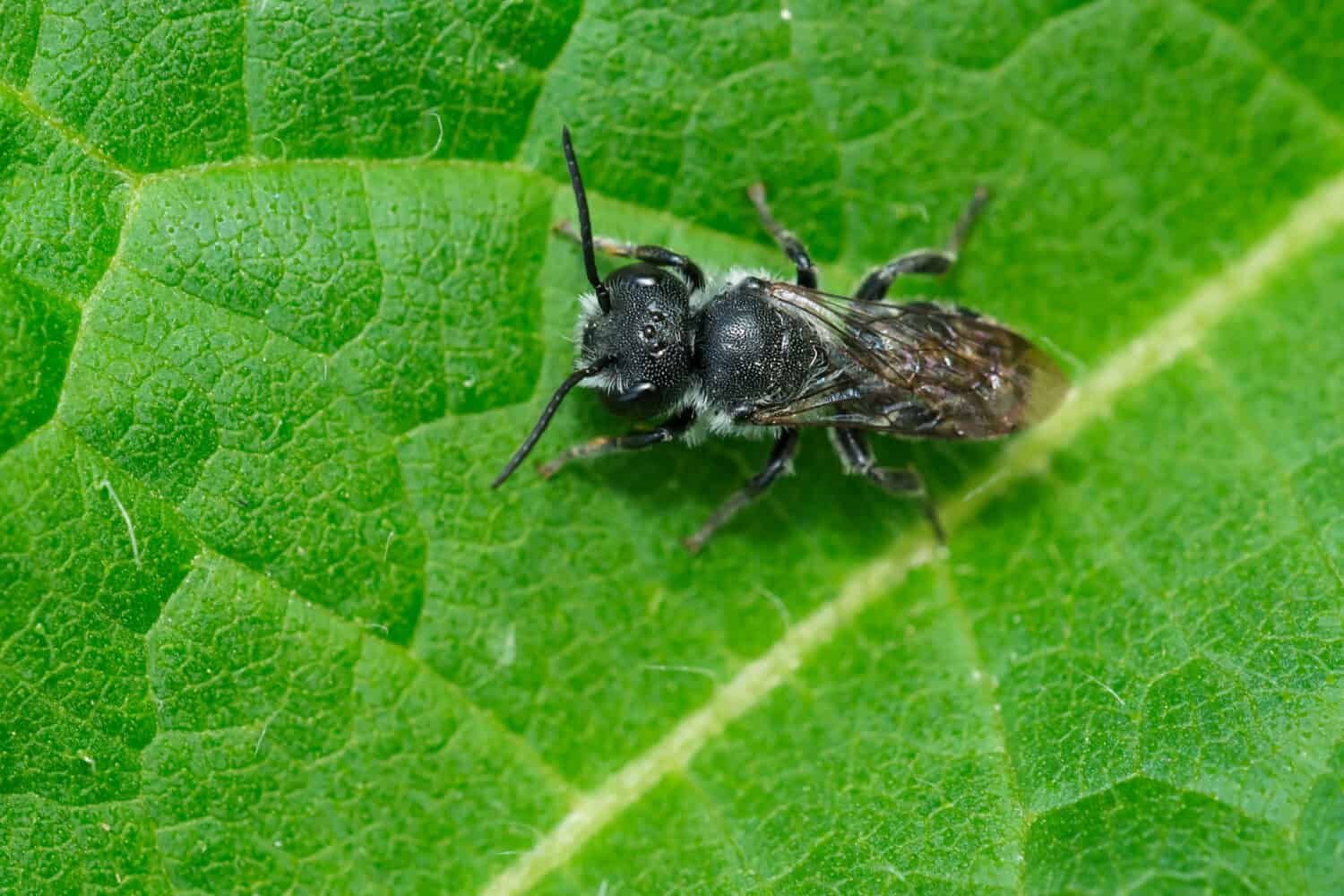
Bellflower resin bees are a small, solitary bee species.
©Paul Reeves Photography/Shutterstock.com
Texas Leaf-Cutter Bee
Texas leaf-cutter bees are native to the U.S. and southern Canada. They have black and white stripes on their abdomen and their wings are semi-transparent. They also have short white hair across their head and thorax. These bees are solitary and construct individual nests in wood or in the ground. They are not aggressive and will rarely sting, if they do sting it is less painful than honeybees. Texas leaf-cutter bees grow to 0.39 to 0.51 inches long.

Texas leaf-cutter bees have thin white stripes across their abdomen.
©Elliotte Rusty Harold/Shutterstock.com
Waroon Cloak-And-Dagger Bee
The waroon cloak-and-dagger bee species are native to Australia. They are mainly white with black markings and semi-transparent black wings. They are a type of cuckoo bee and are considered parasitic because they lay eggs in the nests of other bees. These bees average 0.39 to 0.51 inches in length.
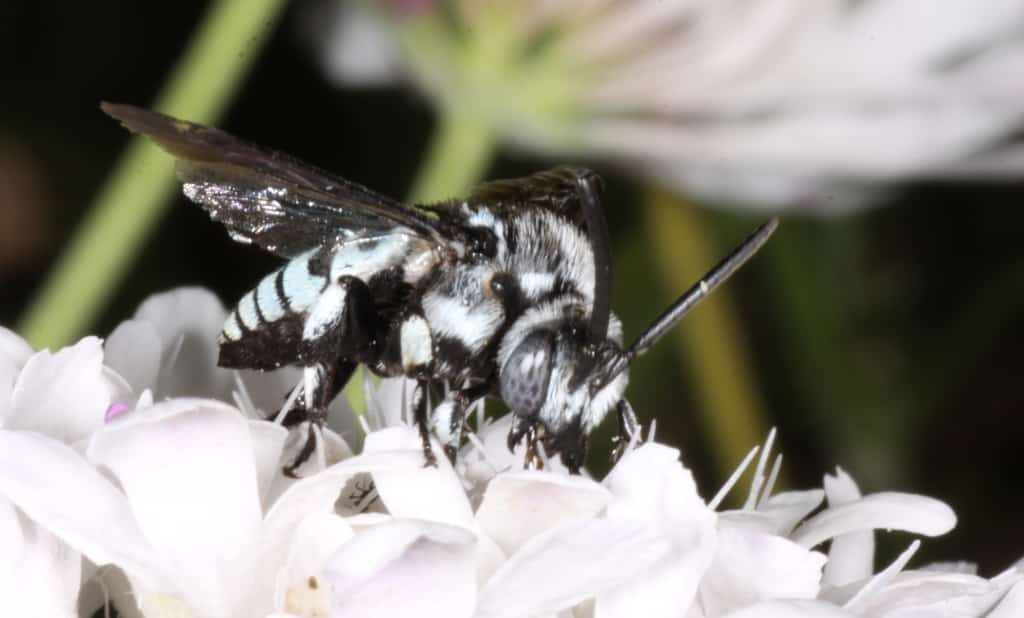
Waroon cloak-and-dagger bee on a flower.
©Derek Keats from Johannesburg, South Africa / CC BY 2.0 – License
Ashy Mining Bee
The ashy mining bee species live in Europe. They are black or dark gray with white hairs on their femora. They are solitary bees that nest in simple burrows. Ashy mining bees grow to around 0.59 inches long. They are friendly bees that will not sting unless provoked.
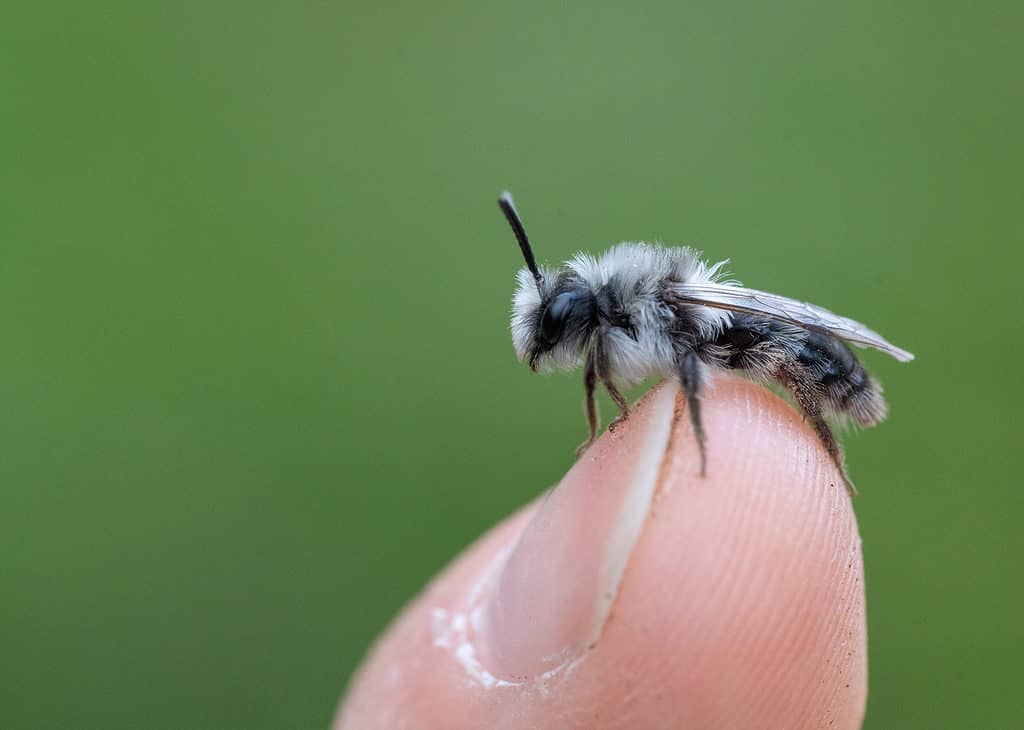
Ashy mining bees are black with white hairs on their femora.
©Joshua Clarke/Shutterstock.com
Broad-Footed Cellophane Bee
This bee species is gray with white hair and a striped white and black abdomen. They live throughout North America. These bees are 0.31 to 0.43 inches in length. They are not aggressive bees and rarely will sting.

A side view of a female broad-footed cellophane bee.
©Zerene Stacker / Flickr – License
Denticulate Longhorn Bee
Denticulate longhorn bees live in the northeast U.S. and Canada. They are solitary, ground-nesting bees. They have a gray or black abdomen with white stripes. These bees grow to 0.35 to 0.43 inches. They usually live around their host plant, ironweed, in the wild or in residential gardens. Male bees do not have stingers, and females will very rarely sting.
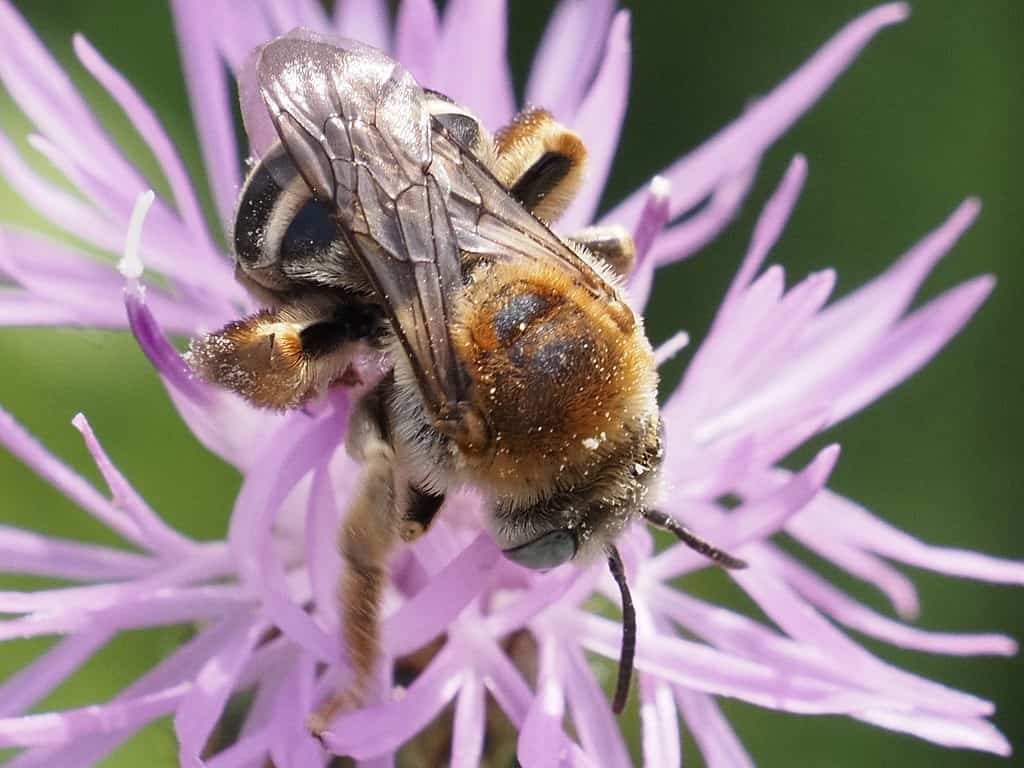
Denticulate longhorn bees live in the northeast U.S. and Canada.
©Michael Knapp / CC BY 4.0 – License
Leathery Sweat Bee
The leathery sweat bee species is native to Canada and have spread south to Illinois and Georgia. They are mainly black, with semi-transparent wings and black and cream abdomens. They reach 0.27 to 0.44 inches in length. Leathery sweat bees don’t usually sting people. They aren’t aggressive, but they are attracted to the smell of human sweat.
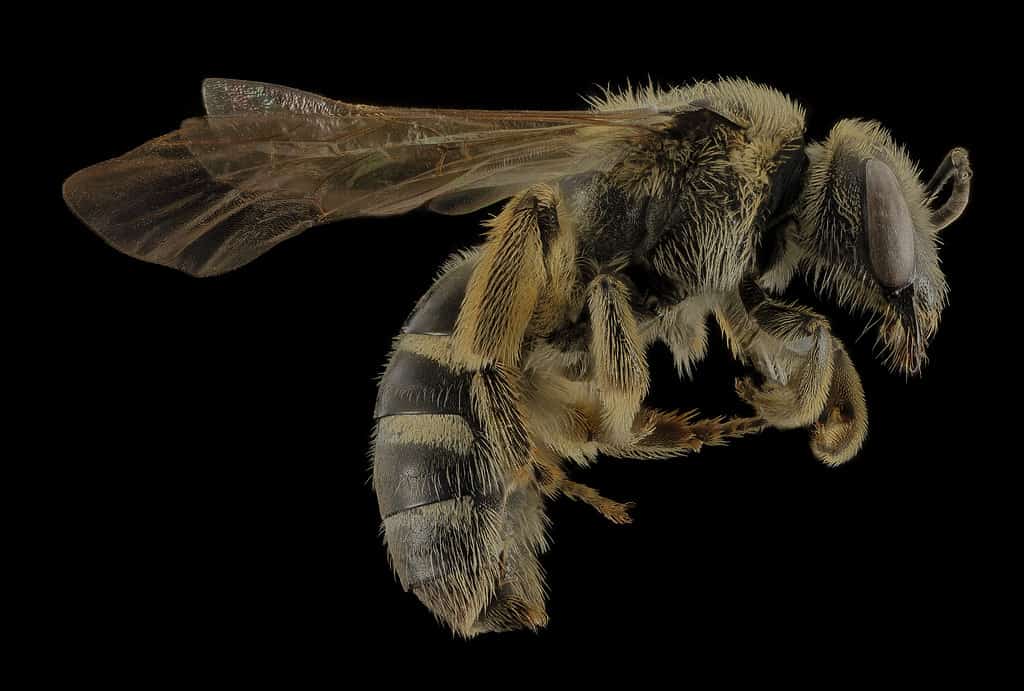
Side view of a leathery sweat bee.
©Brooke Alexander / Flickr – License
Verbesina Longhorn-Cuckoo
Verbesina longhorn-cuckoo bees live in Central America and North America. They are 0.25 to 0.5 inches long and look like wasps. They have black and white bodies with a unique pattern that looks like a long stripe going down the middle of their abdomen and multiple black stripes going across. These bees will rarely sting.
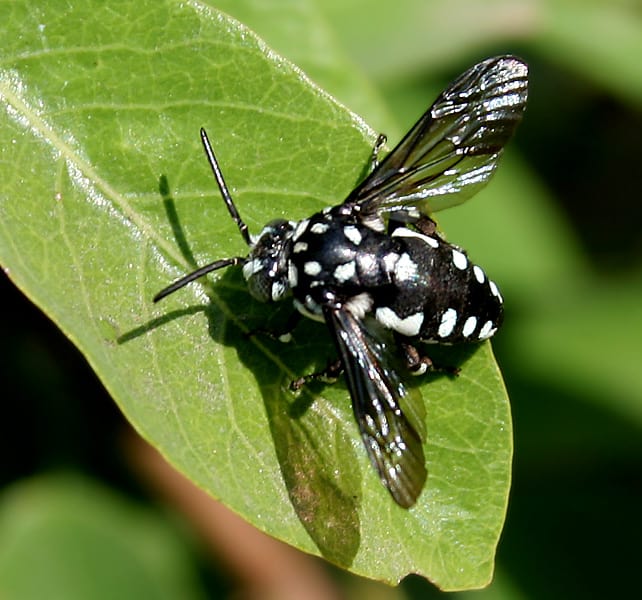
Verbesina longhorn-cuckoo bees are 0.25 to 0.5 inches long and look like
wasps
.
©J.M.Garg / CC BY 3.0 – License
Spine-Shouldered Cellophane Bee
Spine-shouldered cellophane bees live in North America. Their name comes from the long spines that are behind their heads. They are black with thin white stripes on their abdomens. They grow to a length of 0.39 to 0.45 inches. Spine-shouldered cellophane bees are solitary but often nest in large groups. They are not aggressive and will rarely try to sting.

Spine-shouldered cellophane bee resting on an orange flower.
©Martha Marks/Shutterstock.com
Morning Glory Turret Bee
True to their name, morning glory turret bees mainly pollinate flowers in the morning glory family. They live in North and South America in rural and urban areas. Turret bees build their nests underground and will rarely sting unless provoked. They are all black with thin white stripes. These bees average a little over 0.5 inches long.
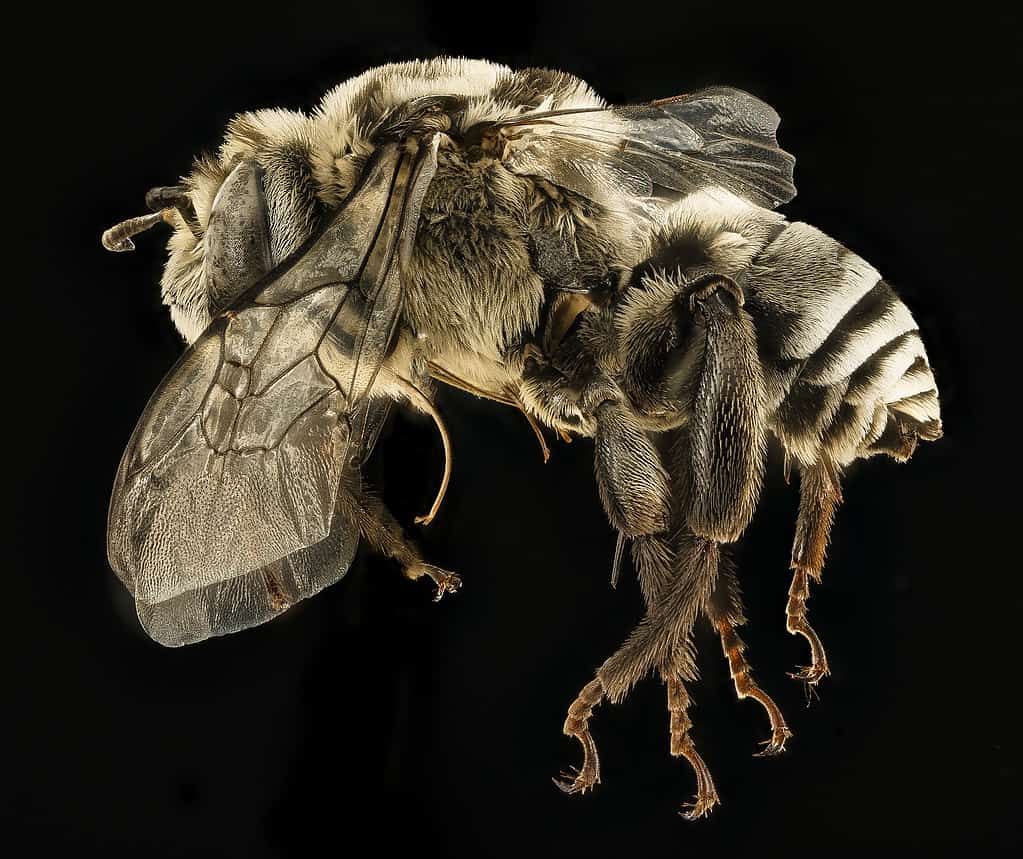
A side view of the morning glory turret bee.
©Ashleigh Jacobs / Flickr – License
Nason’s Mining Bee
This miner bee species is found in Central and North America. They have black bodies with white stripes and semi-transparent brown wings. Like many miner bees, they are non-aggressive and will rarely sting.
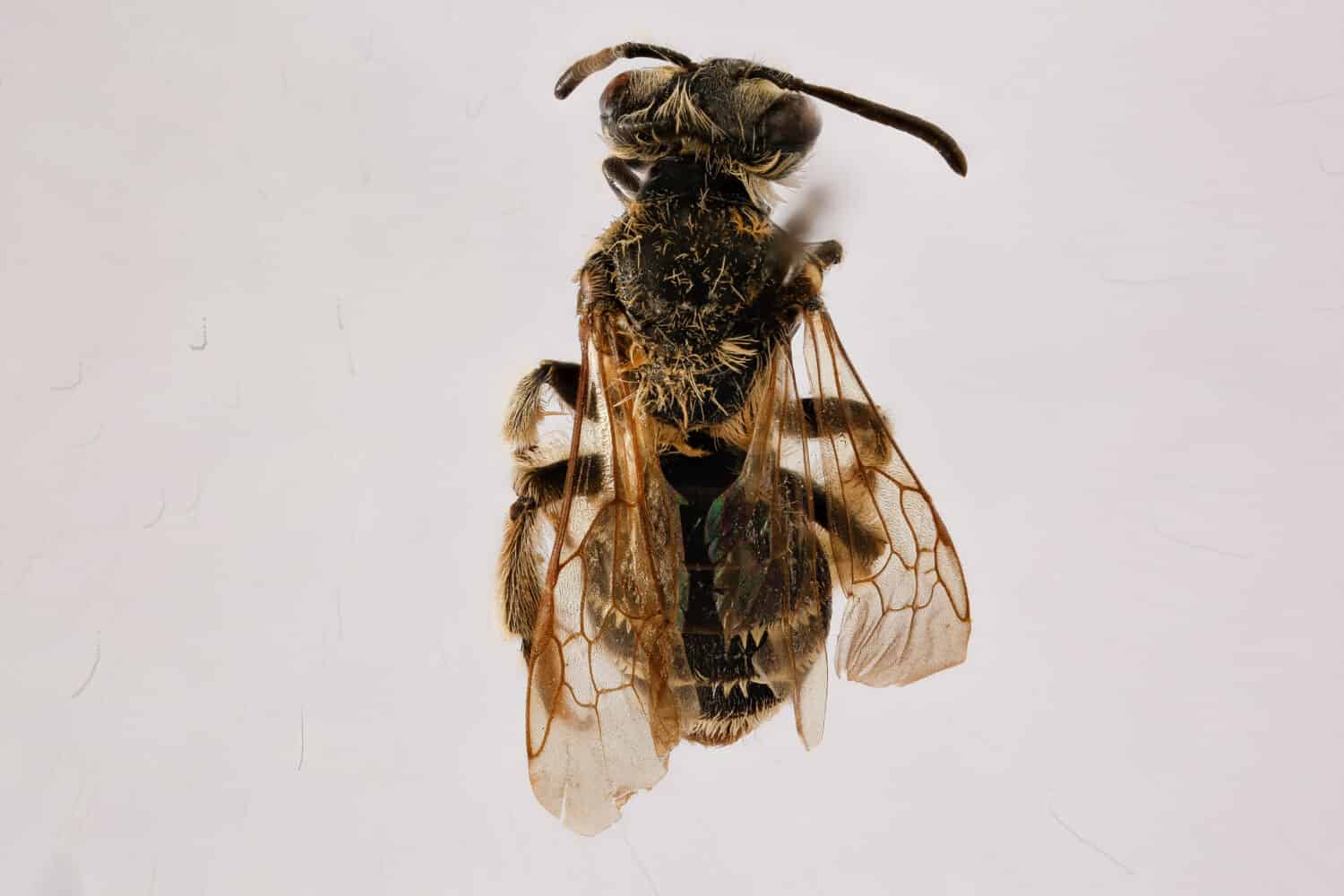
Nason’s miner bees are non-aggressive and will rarely sting.
©lego 19861111/Shutterstock.com
Red-Footed Cuckoo Leafcutter
The red-footed cuckoo leafcutter bee species are native to North America. They are a parasitic species and take over other bees’ nests. These bees have black and cream bodies with thin stripes on their abdomen. They have triangular-shaped abdomens that end at a point. Red-footed cuckoo leafcutters are not aggressive and have a mild sting.

A close-up of the red-footed cuckoo leafcutter bee.
©maxson.erin / CC BY 2.0 – License
Pugnacious Leafcutter Bee
Pugnacious leafcutter bees live throughout North America. They are black and white or yellow, with fuzzy hairs covering their striped bodies. They are a larger bee species, ranging in size from 0.43 to 0.7 inches. These bees will rarely sting unless provoked.
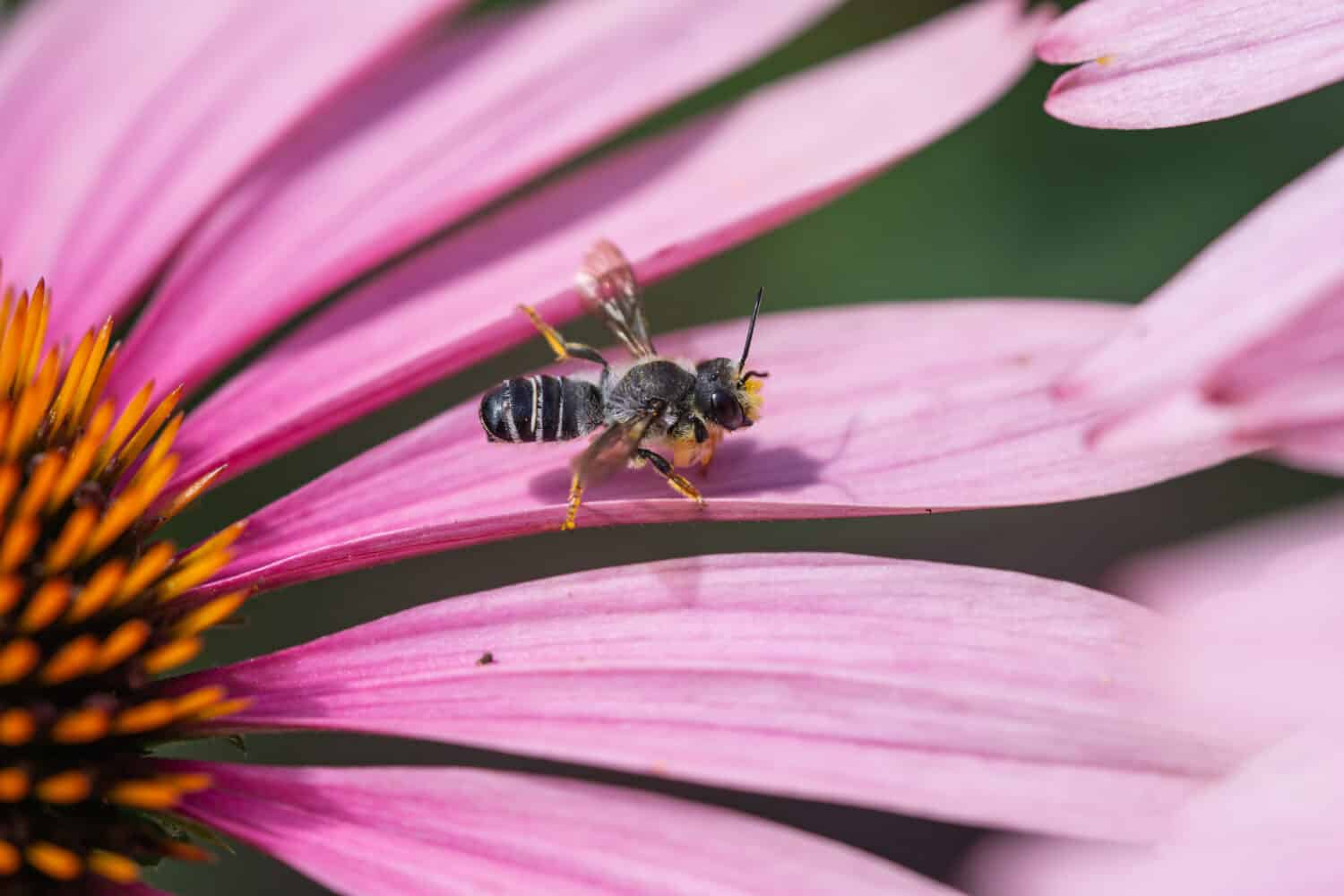
Pugnacious leafcutter bees are black and white striped with yellow legs.
©Erik Agar/Shutterstock.com
The photo featured at the top of this post is © IanRedding/Shutterstock.com
Thank you for reading! Have some feedback for us? Contact the AZ Animals editorial team.






